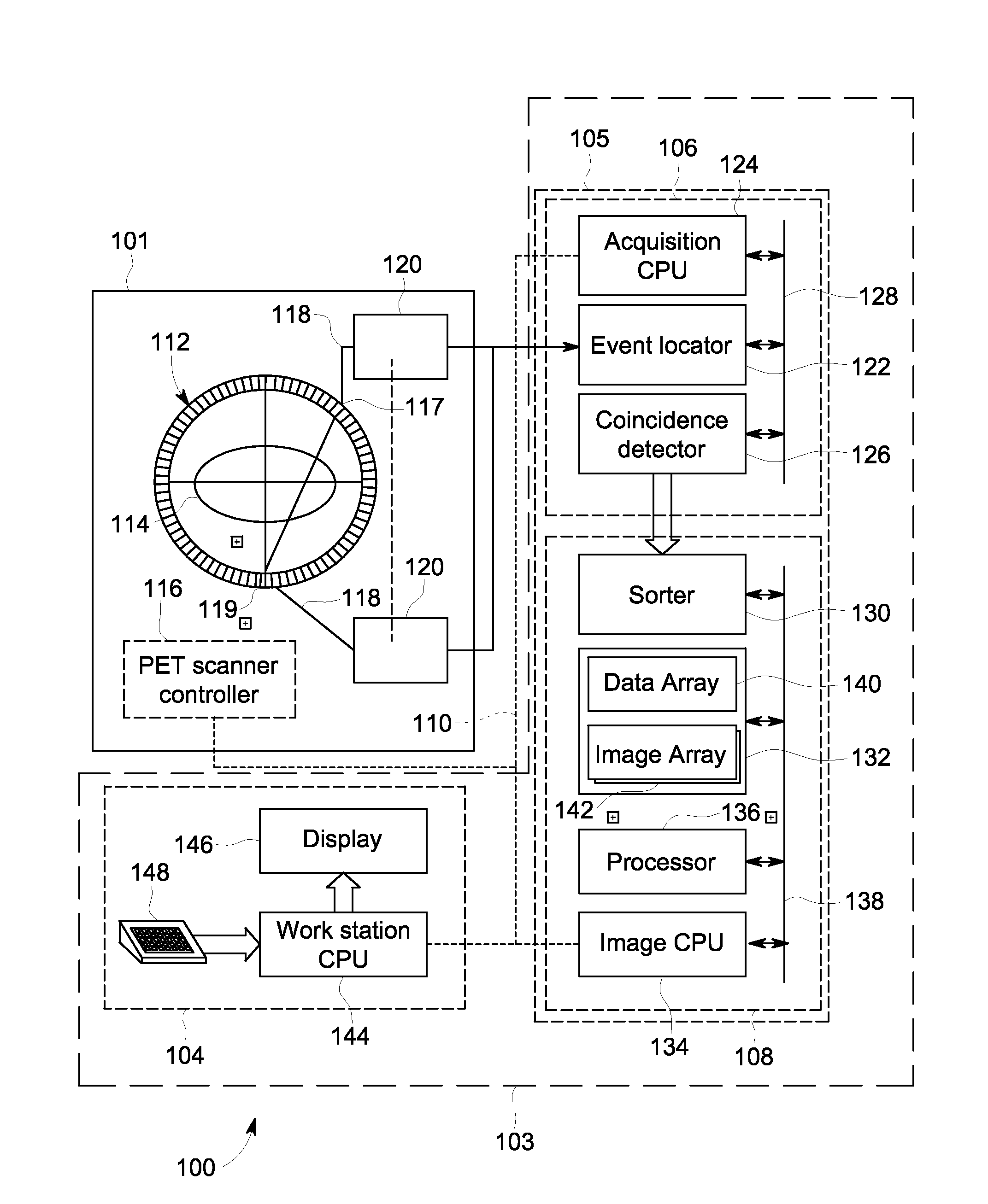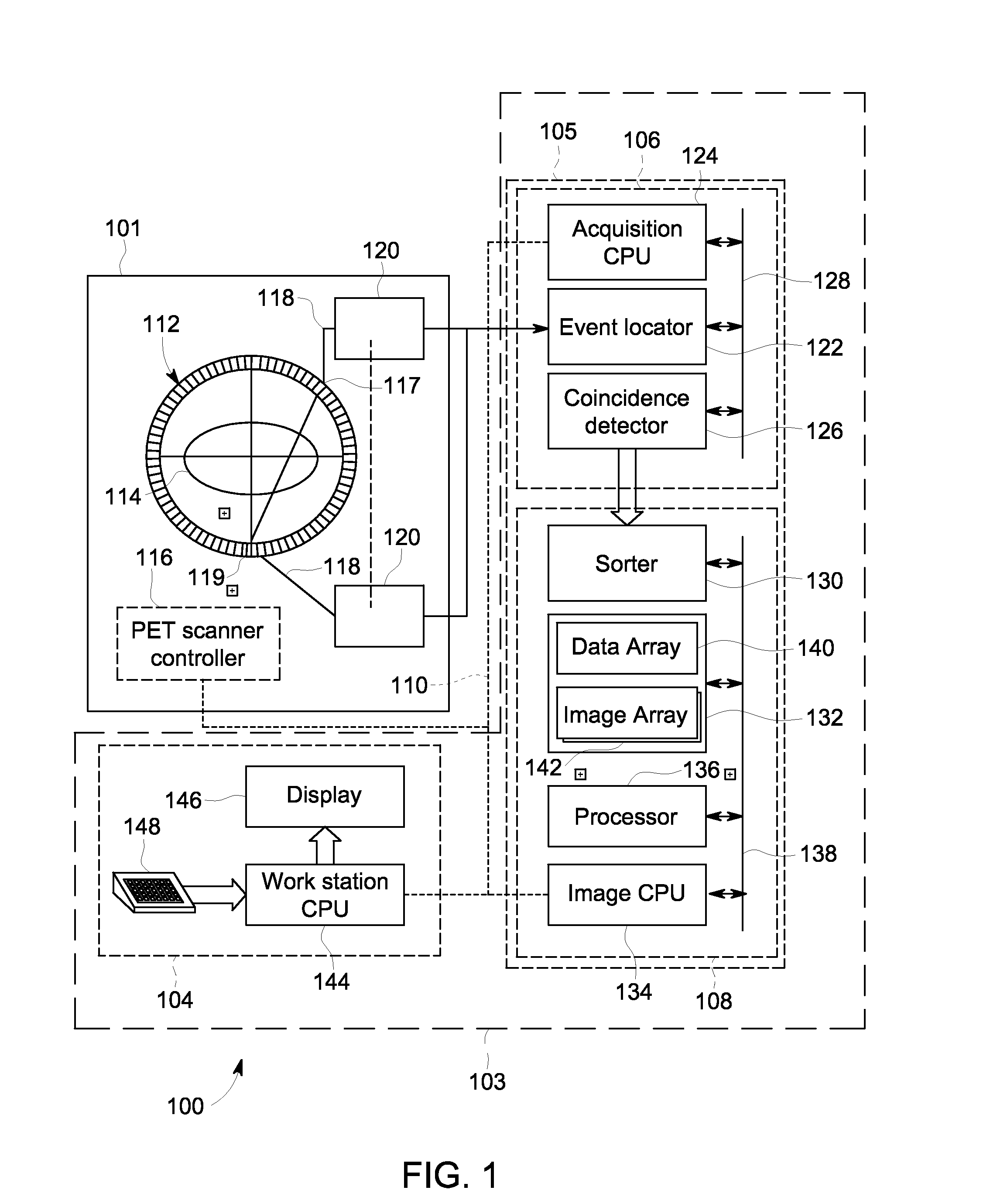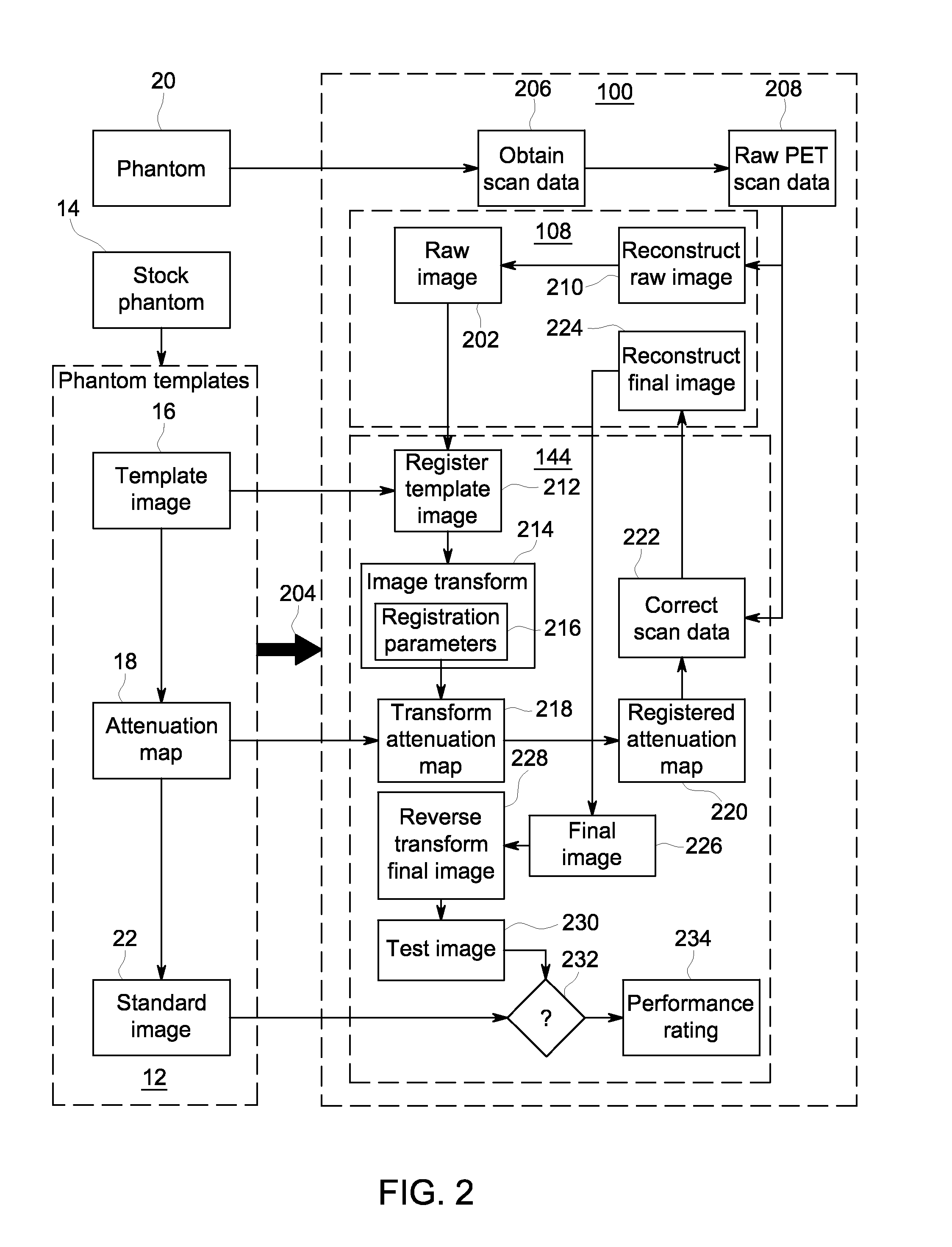System and method for attenuation correction of phantom images
a technology of attenuation correction and phantom image, which is applied in the field of medical imaging, can solve the problems of easy attenuation, difficult to obtain reliable ac of pet signals based on mr signals from a single scan, and inconvenient correction of mr image data for attenuated pet image data,
- Summary
- Abstract
- Description
- Claims
- Application Information
AI Technical Summary
Benefits of technology
Problems solved by technology
Method used
Image
Examples
Embodiment Construction
[0023]Reference will be made below in detail to exemplary embodiments of the invention, examples of which are illustrated in the accompanying drawings. Wherever possible, the same reference characters used throughout the drawings refer to the same or like parts, without duplicative description. Exemplary embodiments of the present invention are described with respect to imaging a commercially-available phantom (i.e. a body of known shape and composition, usable for scan calibration, or the like), however, embodiments of the invention also are applicable for imaging any target for which a template image and attenuation map can be obtained. Embodiments of the invention relate to improving attenuation correction of PET phantom images.
[0024]FIG. 1 shows in schematic view an exemplary embodiment of a PET imaging system 100 in which various embodiments of the invention may be implemented. Many other types of PET imaging system are known, and the exemplary PET system 100 is merely one type...
PUM
 Login to View More
Login to View More Abstract
Description
Claims
Application Information
 Login to View More
Login to View More - R&D
- Intellectual Property
- Life Sciences
- Materials
- Tech Scout
- Unparalleled Data Quality
- Higher Quality Content
- 60% Fewer Hallucinations
Browse by: Latest US Patents, China's latest patents, Technical Efficacy Thesaurus, Application Domain, Technology Topic, Popular Technical Reports.
© 2025 PatSnap. All rights reserved.Legal|Privacy policy|Modern Slavery Act Transparency Statement|Sitemap|About US| Contact US: help@patsnap.com



